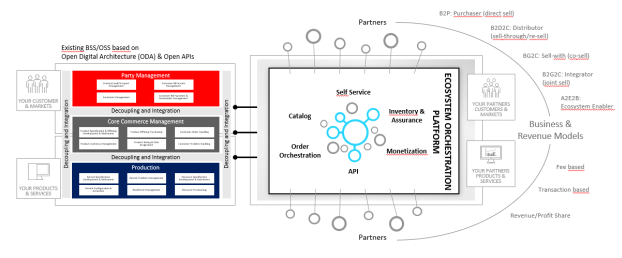The promise of edge technology’s ultra-low latency, reduced load on bandwidth capacity, real-time decision making, and ultra-reliable intelligent operations would make any CIO sit up and take notice. In fact, a recent Analysys Mason survey highlighted that 87% of operators consider edge computing to be a top strategic priority.
New use cases like connected and autonomous vehicles, smart manufacturing, Industry 4.0,remote operations on oil rigs and in mines, and safe spaces and smarter cities, all require real-time decision making coupled with large data volume processing making edge the perfect solution to their processing needs, says Andreas Gabriel, CTO, Beyond Now.
By combining 5G’s increased speed with the additional latency reduction, processing power and lower costs of edge compute, companies can significantly improve the performance of their business applications to offer a better and ultra-reliable user experience. IDC predicts that by 2023, 70% of enterprises will run varying levels of data processing at the edge to accommodate and actualise these benefits.
But if CSPs want to play in the edge market, they will need to collaborate with partners to build outcome-based solutions at scale for successful edge and 5G monetisation.
Edge is a partner ecosystem play
Enterprises are eager to jump on board and adopt edge capabilities, but they will want to partner with CSPs that can do more than just deliver connectivity. In an effort to reduce IT complexity for enterprise customers, CSPs can offer great value and unlock new streams of revenue by working alongside a range of partners to create solutions that solve unique customer challenges. And, according to IDC statistics, 72% of enterprises expect operators to provide edge solutions with a multitude of partners. This is where the ecosystem orchestration model comes in.
Co-creating with partners allows CSPs to gradually develop a growing number of solutions with an increasing number of technology partners and vertical specialists. These solutions remove the complexity of needing to understand how to implement the advanced technologies that the enterprise must adopt to scale their business.
Establishing governance for your partner ecosystem
By shifting to an orchestration model, CSPs must also be able to deal with the complexity of managing several partners and customers at one given time. Certain industry verticals, especially manufacturing, can see 10s, if not 100s of potential use cases for edge technology and the good news is that most of these can be built on common components that already exist. However, when considering vertical industries like agriculture, transport and logistics, edge solutions will need to be delivered to an extensive number of partners.
The challenge is that it’s not a simple supplier relationship. There may be parties like Independent Software Vendors (ISVs) involved who want to create software on top of your solutions, all of them interacting with you through different commercial models. So, establishing a governance that manages the complex hierarchies of both partners and customers, especially when handling a variety of processes such as ordering, assurance and billing etc., will be essential.
This allows CSPs to manage a catalogue of partners and partner solutions, to orchestrate the fulfilment and monetisation for solutions that involve multiple partners, as well as provide the required self-service capabilities and APIs for allowing partners to quickly onboard and use the platform.
For CSPs advancing beyond connectivity offerings and developing business outcome-based solutions, adopting a platform business model will be critical in managing this complexity and consequently increasing their attractiveness to partners. However, the IT complexity can be extremely daunting. And with such a large number of partners and customers to manage, CSPs will need to adopt a completely new approach to IT to ensure they can package consumable edge solutions at scale.
Ecosystem orchestration requires a new kind of IT approach
Current BSS/OSS environments are typically optimised for linear business models and are not ready for dealing with a complex partner ecosystem and a platform business model. Partners should be able to see the offerings of others so that they can package, re-create, innovate and publish new solutions for others within the same environment. And CSPs must deal with the processes in a hierarchical way.
Essentially, the ecosystem orchestration platform requires a new kind of IT that plugs in and extends the existing BSS/OSS environment. And the good news is that, by following the Open Digital Architecture (ODA), CSPs already have the correct corresponding APIs that can be built upon to create this required partner management capability.

The five to follow
Following an ecosystem orchestration platform will help CSPs manage this complex hierarchy. But in order to power business growth with Edge and 5G, these are five key considerations CSPs must adopt across all partners relationships and business models:
- Openness – a shift from traditional IT and probably the most important element to consider. You need an open platform that allows partners to self-onboard, join the ecosystem and co-create with other stakeholders.
- Speed – manual processes are not going to work if you are dealing with a large number of partners. Any delays could spell disaster when contemplating industries like connected and autonomous vehicles, smart manufacturing and industry 4.0 use cases.
- Commercial flexibility – find an efficient way to handle the various business models amongst your various partners. Are you co-selling? Jointly selling? Are you using them as a channel?
- Scalability – self-service capabilities are essential with open APIs in place so that partners have the power to make the ecosystem work for them.
- Efficiency and automation – facilitating the rapid launch, sale and monetisation of new digital services in days or weeks, not months, making you more agile in the face of competition.
Providing a wide range of solutions through a system orchestration platform allows CSPs to quickly launch and monetise new business solutions for various verticals, all at scale and regardless of their individual business priorities. The ability to build outcome-based solutions is key for edge and 5G monetisation, and partners will be an essential foundation for delivering these complex services. Adopting a fresh IT approach will allow CSPs to effectively onboard new partners and enable them to manage this hierarchy of partners and customers at one time.
The gauntlet has been thrown down for CSPs to act fast and put in place the infrastructure and underlying capabilities to enable edge services. Managing partner solutions effectively with speed, openness and flexibility will be required to bring this to life.
The author is Andreas Gabriel, CTO, Beyond Now.
Comment on this article below or via Twitter: @VanillaPlus OR @jcvplus






